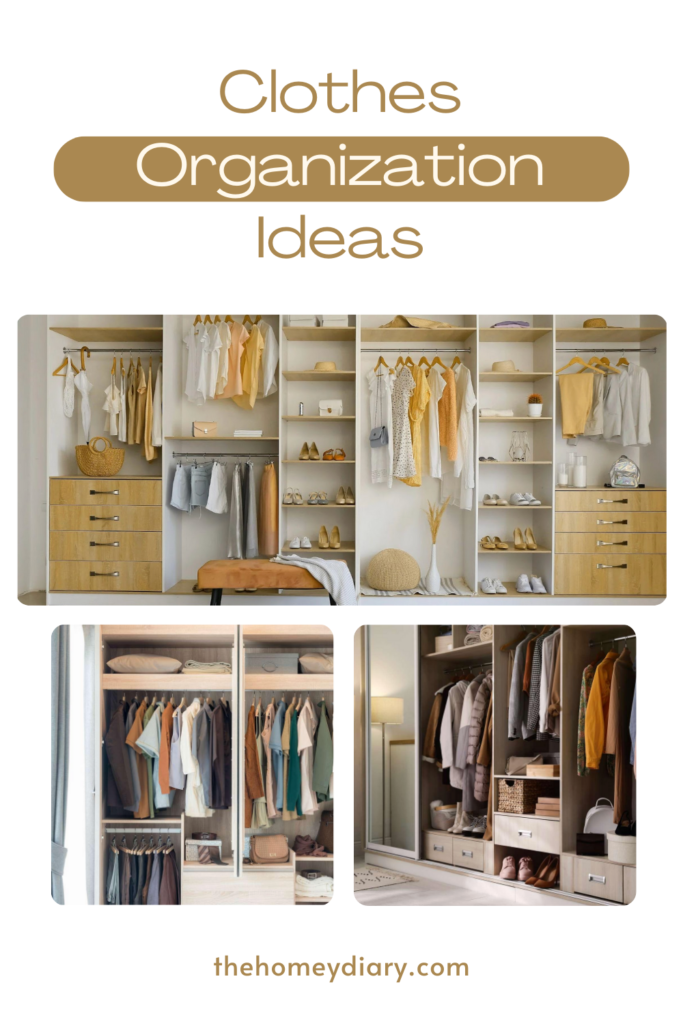
Are you tired of rummaging through cluttered drawers and disorganized closets? Properly organizing your clothes can transform your daily routine, saving you time and reducing stress. In this comprehensive guide, you’ll discover expert techniques to maximize space and create an efficient system for storing your wardrobe. From folding methods that keep garments wrinkle-free to innovative storage solutions, you’ll learn how to turn chaos into order.
The Benefits of Organized Clothes
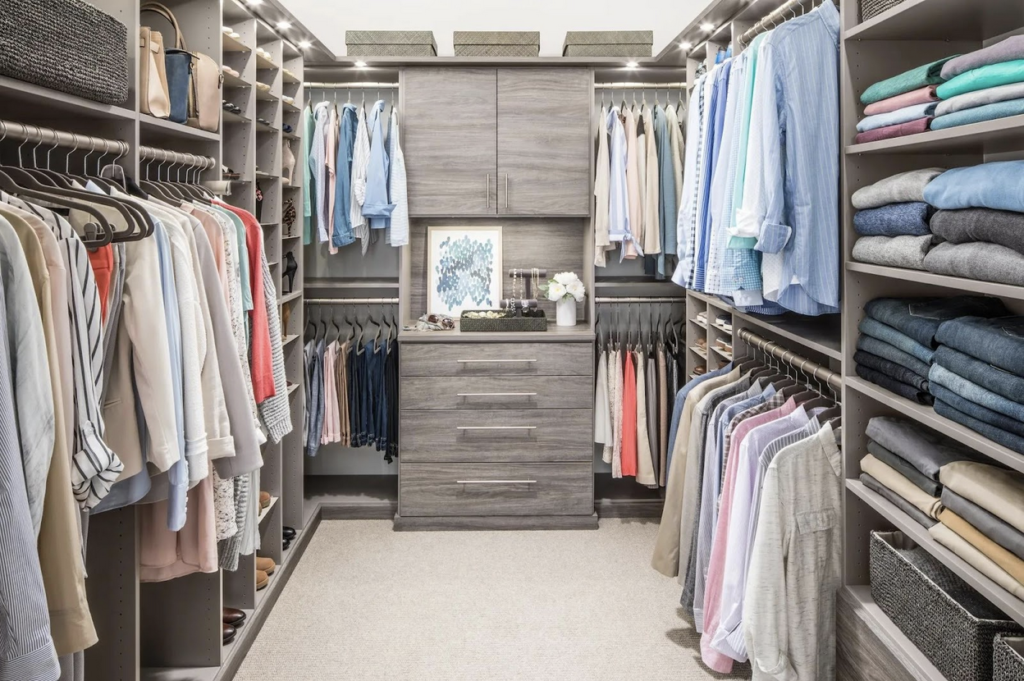
Time-Saving Efficiency
When your clothes are properly organized, you’ll save significant time in your daily routine. No more frantic searches for that specific shirt or pair of pants – everything has its designated place. This streamlined approach allows you to quickly select outfits, reducing stress and starting your day on a positive note. Moreover, an organized wardrobe makes packing for trips a breeze, cutting down on pre-travel anxiety.
Maximized Space Utilization
Organizing your clothes effectively helps you make the most of your available storage space. By implementing smart folding techniques and using appropriate storage solutions, you can fit more items into your drawers and closets without creating clutter.
Extended Clothing Lifespan
Proper organization isn’t just about aesthetics – it’s also about preserving your wardrobe investments. When clothes are neatly folded or hung, they’re less likely to wrinkle, stretch, or become damaged. This careful treatment extends the life of your garments, reducing the frequency of replacements and saving you money in the long run.
Enhanced Style Awareness
An organized closet provides a clear overview of your wardrobe, allowing you to see all your options at a glance. This visibility can inspire new outfit combinations and help you identify gaps in your wardrobe. You’ll be more likely to wear all your clothes, rather than relying on the same few items repeatedly. This increased awareness of your style options can boost your confidence and creativity in personal fashion choices.
Essential Supplies for Organizing Clothes
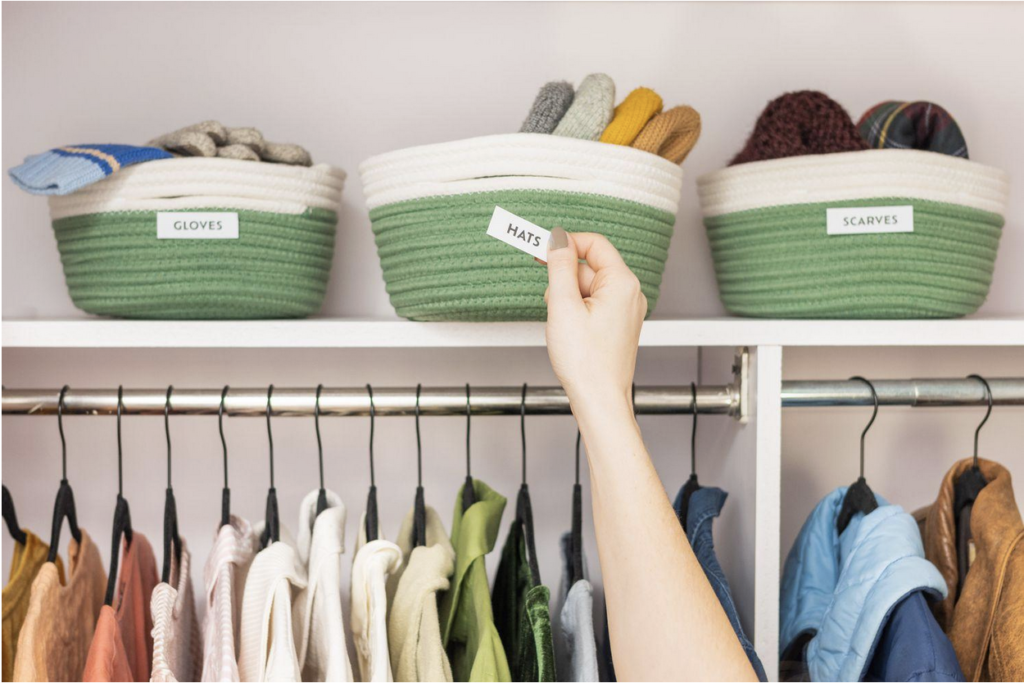
When it comes to organizing your wardrobe, having the right tools can make all the difference. Let’s explore some must-have supplies that will transform your closet and drawers into efficient, well-organized spaces.
Storage Solutions
Invest in a variety of storage containers to maximize space and keep items tidy. Clear plastic bins are perfect for seasonal clothing, while fabric boxes add a touch of style to open shelving. Drawer dividers are essential for keeping smaller items like socks and underwear neatly separated. For closets, consider hanging organizers with multiple pockets – they’re great for accessories or shoes.
Labeling and Categorization
A label maker is a game-changer for maintaining organization. Create clear, consistent labels for bins, shelves, and even hangers to easily identify where everything belongs. Color-coding is another effective strategy – use different colored hangers or tags to distinguish between types of clothing or family members’ items.
For a budget-friendly option, washi tape and a marker can create attractive, removable labels. This method is particularly useful for temporary organization systems or when you’re still fine-tuning your setup.
Maintenance Tools
To keep your newly organized space pristine, stock up on lint rollers, fabric freshener sprays, and small sachets of lavender or cedar to naturally repel moths and keep clothes smelling fresh. A folding board can help maintain consistency in your stacks of shirts and sweaters, while a steamer can quickly remove wrinkles without the need for ironing.
Decluttering Your Closet: 5 Simple Steps

Decluttering your closet is the first crucial step towards achieving an organized wardrobe. Follow these five simple steps to streamline your clothing collection and create a more functional space.
1. Empty Your Closet
Begin by removing everything from your closet. This clean slate allows you to assess your entire wardrobe objectively and makes the sorting process more manageable.
2. Sort and Categorize
Divide your clothes into categories such as tops, bottoms, dresses, and accessories. As you sort, create three piles: keep, donate, and discard. Be honest with yourself about what you actually wear and what no longer serves you.
3. Evaluate Each Item
Carefully consider each piece of clothing. Ask yourself:
- Have I worn this in the past year?
- Does it fit well and make me feel confident?
- Is it in good condition?
- Does it align with my current lifestyle and fashion preferences?
If you answer “no” to any of these questions, it’s time to let go.
4. Organize the “Keep” Pile
Group similar items together and decide on a logical arrangement for your closet. Consider organizing by color, season, or occasion to make selecting outfits easier.
5. Implement Storage Solutions
Invest in appropriate storage solutions to maximize your closet space. Utilize:
- Slim hangers to save space and prevent clothes from slipping
- Drawer organizers for smaller items like socks and underwear
- Shelf dividers to keep stacked items neat and accessible
- Clear storage boxes for seasonal or less frequently used items
By following these steps, you’ll create a clutter-free closet that not only looks better but also functions more efficiently, making your daily routine smoother and less stressful.
Folding Techniques to Save Space in Drawers

When it comes to maximizing drawer space, mastering efficient folding techniques is key. By employing the right methods, you can significantly increase storage capacity while keeping your clothes easily accessible and wrinkle-free.
The KonMari Method
Marie Kondo’s famous folding technique involves creating compact rectangles that stand upright. To achieve this:
- Lay the item flat and smooth out wrinkles.
- Fold in the sides to create a long rectangle.
- Fold the rectangle into thirds or quarters, depending on the item’s size.
- Stand the folded piece vertically in your drawer.
This method allows you to see all items at a glance and prevents clothes at the bottom from being crushed.
File Folding for T-Shirts and Pants
File folding is another space-saving technique that works well for casual wear:
- For t-shirts: Fold in half vertically, then fold the sleeves in. Roll from the bottom up, creating a compact cylinder.
- For pants: Fold in half lengthwise, then fold in thirds or quarters. Place folded pants in a row, standing on their folded edge.
This approach maximizes vertical space and makes it easy to pull out individual items without disturbing others.
Compact Folding for Underwear and Socks
Small items require special attention to prevent drawer clutter:
- Underwear: Fold in half, then in thirds. Stack vertically or in rows.
- Socks: Instead of balling them up, fold them in half and tuck one into the other. Arrange in rows for easy access.
By implementing these folding techniques, you’ll transform cluttered drawers into organized, space-efficient storage areas. Remember, consistency is key – stick to your chosen method to maintain order and make the most of your drawer space.
Drawer Organization: Vertical vs Horizontal Storage

When it comes to organizing clothes in drawers, the age-old debate of vertical vs. horizontal storage continues to divide opinion. Both methods have their merits, and understanding the pros and cons of each can help you make an informed decision for your wardrobe.
Vertical Storage: The KonMari Method
Vertical storage, popularized by organizing guru Marie Kondo, involves folding clothes into compact rectangles and storing them upright. This method offers several advantages:
- Visibility: You can see all items at a glance, making it easier to find what you need.
- Space efficiency: Vertical folding allows you to fit more items in a single drawer.
- Wrinkle prevention: Clothes are less likely to develop creases when stored vertically.
However, vertical storage can be time-consuming to maintain and may not work well for bulky items like sweaters.
Horizontal Storage: The Traditional Approach
Horizontal storage, the more conventional method, involves laying clothes flat in stacks. This approach has its own benefits:
- Simplicity: It’s quick and easy to put away laundry using this method.
- Versatility: Works well for a variety of clothing types, including bulky items.
- Less folding: Some items, like t-shirts, can be stored with minimal folding.
The downside is that items at the bottom of the stack can be difficult to access and may become wrinkled over time.
Choosing the Right Method for You
Ultimately, the best storage method depends on your personal preferences and the types of clothes you own. Consider experimenting with both approaches to find what works best for your wardrobe and lifestyle. You might even find that a combination of vertical and horizontal storage is the ideal solution for your drawer organization needs.
Closet Organization: Hanging, Shelving and More
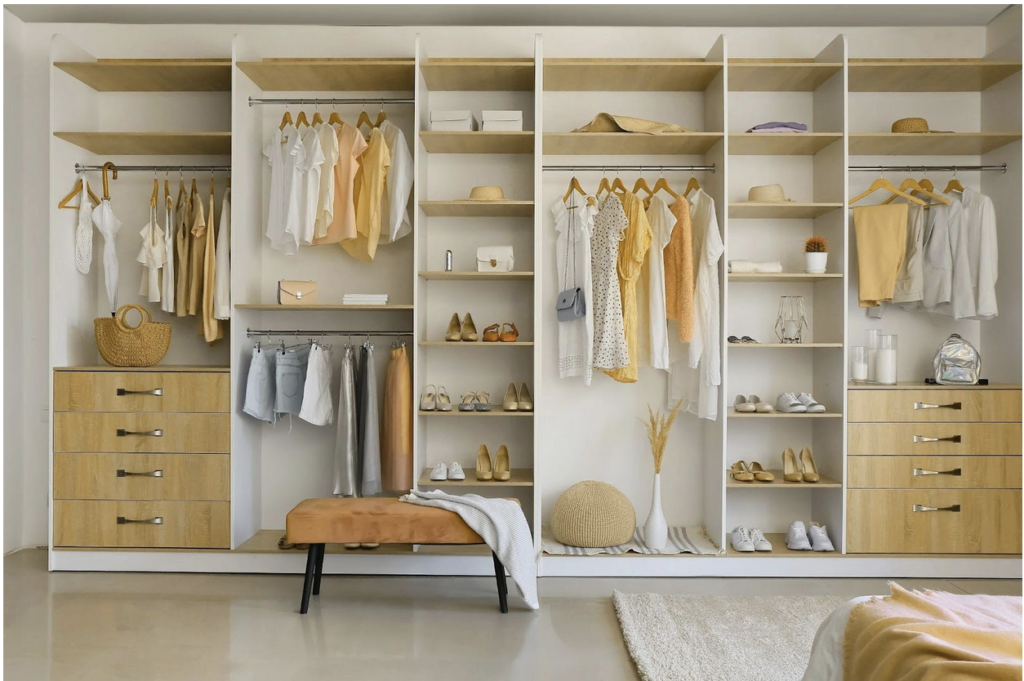
Maximizing Vertical Space
When organizing your closet, think vertically. Utilize the full height of your closet by installing a double-hang rod system. This simple addition can double your hanging space, perfect for shirts, blouses, and shorter items. For longer garments like dresses and coats, dedicate a section with a single rod at a higher level.
Shelving Solutions
Incorporate adjustable shelving units to create customized storage areas. These are ideal for folded items like sweaters, jeans, and accessories. Use shelf dividers to keep stacks neat and prevent toppling. For smaller items, consider adding pull-out drawers or baskets within the shelving system.
Pro tip: Reserve eye-level shelves for frequently used items, while storing less-used pieces on higher or lower shelves.
Accessory Organization
Don’t let accessories become an afterthought. Install hooks on the back of your closet door for belts, scarves, or jewelry. A tie rack can double as a holder for necklaces or bracelets. For shoes, consider a hanging organizer or over-the-door rack to save floor space.
Invest in specialized organizers for smaller items:
- Clear acrylic trays for jewelry
- Small bins for socks and underwear
- Drawer inserts for ties and pocket squares
These additions will keep your accessories easily accessible and prevent them from becoming a jumbled mess.
Labeling and Categorizing Your Clothes
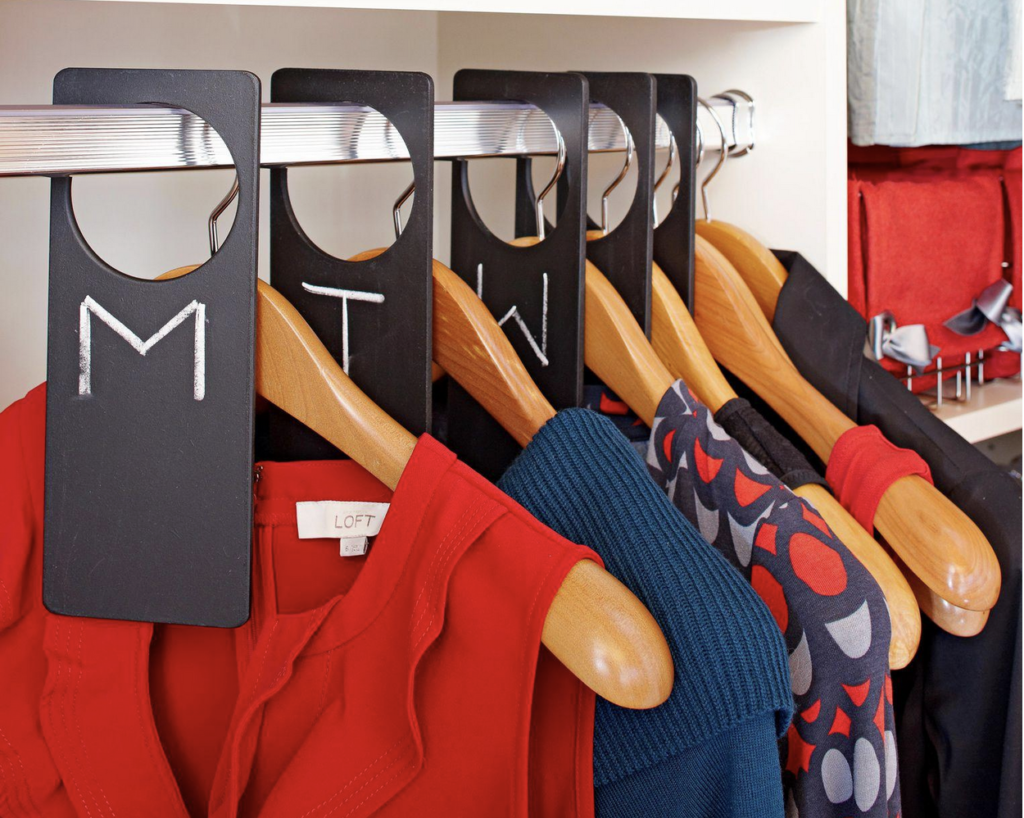
Organizing your wardrobe becomes infinitely easier when you implement a robust labeling and categorization system. This approach not only streamlines your daily routine but also maximizes the space in your drawers and closet.
Create a Personalized Categorization System
Start by developing a categorization system that aligns with your lifestyle and wardrobe needs. Consider grouping clothes by type (e.g., tops, bottoms, dresses), occasion (work, casual, formal), or season (summer, winter). For instance, you might have categories like “Work Blouses,” “Weekend T-shirts,” or “Winter Sweaters.” This system will serve as the foundation for your organization’s efforts.
Implement Clear Labels
Once you’ve established your categories, it’s time to label. Invest in a label maker or use handwritten tags for a more personal touch. Ensure your labels are clear, concise, and easily readable. For drawers, affix labels to the front or use drawer dividers with built-in label slots. In your closet, use hanging tags or label the shelves and rods.
Utilize Color-Coding
Enhance your labeling system by incorporating color-coding. Assign specific colors to different categories or subcategories. For example:
- Blue for work attire
- Green for casual wear
- Red for formal outfits
- Yellow for seasonal items
This visual system allows for quick identification and retrieval of items, even at a glance.
Maintain Consistency
Consistency is key to maintaining an organized wardrobe. Make a habit of returning items to their designated spots after use or laundry. Regularly review and adjust your system as needed, especially as seasons change or your wardrobe evolves. By consistently adhering to your labeling and categorization system, you’ll enjoy a clutter-free, efficient clothing storage solution that saves time and reduces stress in your daily life.
Maintaining an Organized Closet and Drawers

Keeping your closet and drawers tidy isn’t a one-time task; it requires ongoing effort. Here are some strategies to help you maintain an organized wardrobe:
Regular Decluttering Sessions
Schedule periodic decluttering sessions to prevent your closet from becoming overwhelming. Every few months, go through your clothes and accessories, removing items you no longer wear or need. This practice helps maintain a streamlined wardrobe and makes it easier to find what you’re looking for.
- Set reminders on your calendar for quarterly decluttering sessions
- Use the “one in, one out” rule: when you buy a new item, donate or discard an old one
- Keep a donation box in your closet for easy sorting
Implement a Rotation System
To ensure all your clothes get worn and stay fresh, implement a rotation system. This method helps you avoid constantly reaching for the same items while neglecting others.
- Move newly laundered clothes to the back of drawers or closet rods
- Shift older items to the front, making them more accessible
- Rotate seasonal clothes to the forefront as weather changes
Maintain Folding and Hanging Habits
Consistency is key when it comes to keeping your closet organized. Develop good habits to maintain the system you’ve established:
- Fold clothes immediately after laundry to prevent wrinkles and clutter
- Hang items properly, using appropriate hangers for different types of clothing
- Return items to their designated spots after use, rather than letting them pile up
By incorporating these practices into your routine, you’ll find it much easier to keep your closet and drawers organized long-term.
Conclusion
Organizing your clothes in drawers and closets is a transformative process that can significantly improve your daily life. By implementing the strategies outlined in this guide, you’ll create a more efficient and visually appealing wardrobe system. Remember to regularly reassess your organization methods and make adjustments as needed. With a well-organized clothing storage system, you’ll save time, reduce stress, and maximize your wardrobe’s potential.

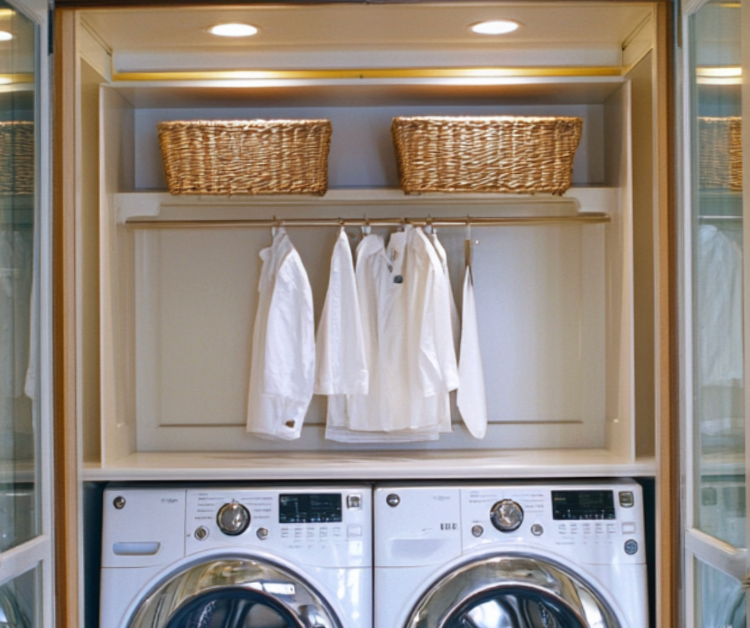

Leave a Reply